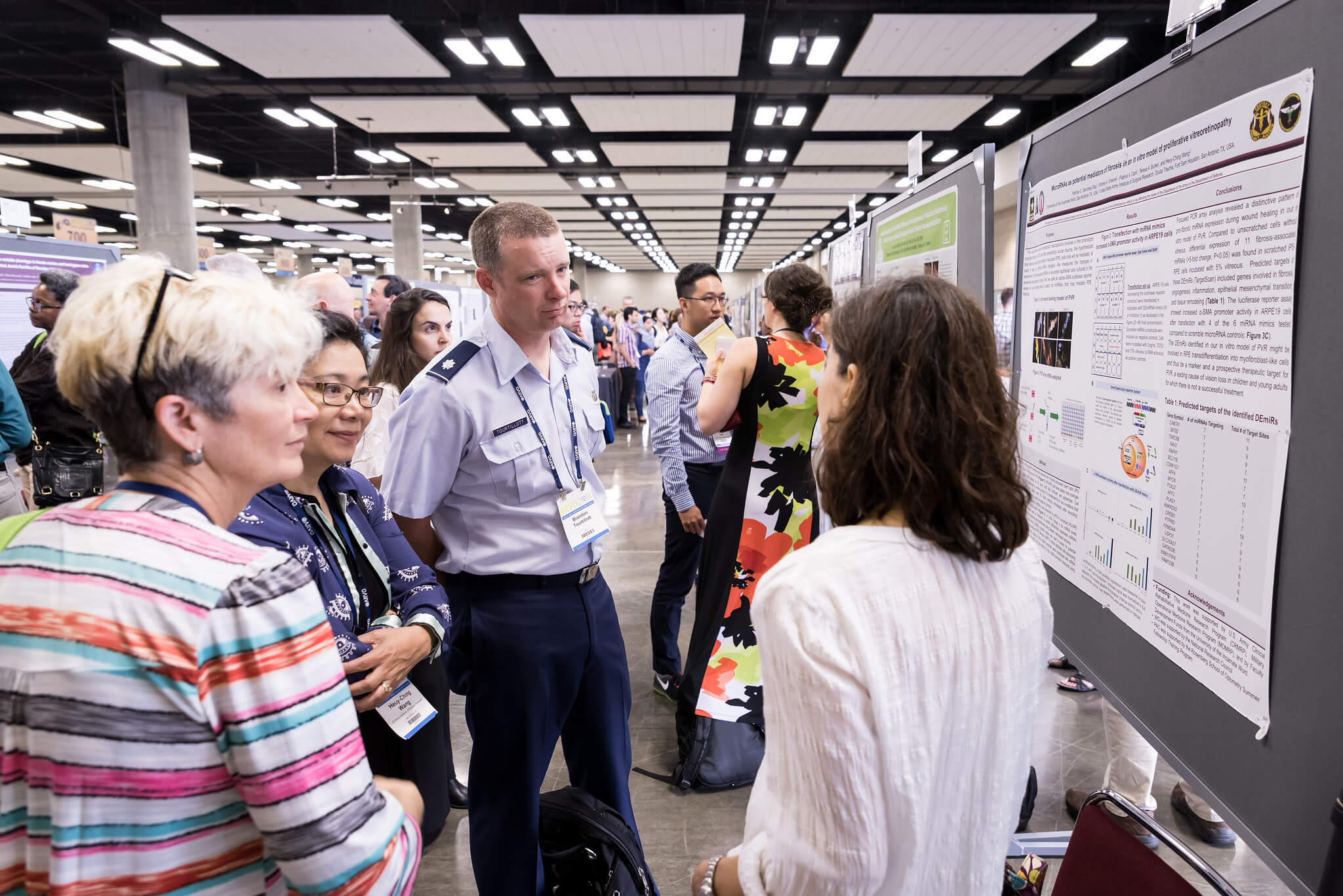Members-in-Training Outstanding Poster Awards

MIT First Authors of the top five (5) scored abstracts scheduled as Poster presentations from each Scientific Section and Cross-sectional Group will be eligible for consideration as award recipients and invited to participate in the virtual MIT Outstanding Poster Award Competition during the Annual Meeting.
One award recipient will be selected from each Scientific Section and Cross-Sectional Group. Award recipients will be announced at the Closing Keynote Session during the Annual Meeting.
To be eligible for the 2023 MIT Outstanding Poster Award
- You must be an ARVO MIT member paid through 2023.
- You must submit an abstract for the 2023 Annual Meeting as First Author.
- As part of your abstract submission process, you must indicate that you want to apply for the MIT Outstanding Poster Award.
- You may apply for the MIT Outstanding Poster Award, a Travel Grant, and the ARVO Foundation Early Career Clinician-Scientist Research Award.
- Your abstract must be accepted for Poster presentation at the 2023 Annual Meeting.
- Your abstract must receive one of the top five (5) review scores given by the reviewing Scientific Section or Cross-sectional Group to MIT First Authors who have applied for the award and whose abstracts have been accepted as Poster presentations.
- Eligibility Acknowledgements will be sent to the First Authors of the top five scores from each Section/Group by April 2023.
- Eligible First Authors must accept their eligibility and confirm their participation in the session.
Congratulations to the 2022 awardees:
AP Section
Endothelial heterogeneity in the inner and outer blood-retinal barrier
Soojin Kim
University of Ulsan College of Medicine
BI Section
Dynein Dysregulation Due to the Absence of NUDC leads to Mitochondrial Mislocalization and Dysfunction in Rod Photoreceptors
Hailey Levi
The University of Alabama at Birmingham School of Medicine
CL Section
Visual Wayfinding in people with Ultra Low Vision using Virtual Reality
Arathy Kartha
Johns Hopkins University
CO Section
Effects of ROS mediated hyaluronan fragmentation on corneal epithelial wound healing
Xiao Lin
University of Houston College of Optometry
EY Section
Comparing spatial patterns of fixation preference in strabismus during visual and memory-guided saccades
Apoorva Karsolia
University of Houston
GEN Cross-sectional Group
Delivery of genome editors to the mouse eye using engineered virus-like particles
Samuel Du
University of California Irvine School of Medicine
GL Section
Targeting the alternative complement pathway as a neuroprotective therapy in glaucoma and optic nerve injury
Cindy Hoppe
Schepens Eye Research Institute of Massachusetts Eye and Ear
IM Section
Comparing microglia and monocyte-derived macrophages in the retina after photoreceptor degeneration
Kaitryn Ronning
University of California Davis
LE Section
The lens-corneal separation requires precision control of Hippo-Yap signaling
Qian Wang
Columbia University Irving Medical Center
LV Cross-sectional Group
Use of Advanced Driver Assistance Systems by Bioptic and Normal Vision Drivers
Chrysanthi Stevens
New England College of Optometry
MOI Cross-sectional Group
Identification and characterization of microaneurysm in OCT and OCT angiography
Min Gao
Oregon Health & Science University
PH Section
GLUT1 is Required for the Anabolic Metabolism of Photoreceptor Cells
John Han
Thomas Jefferson University
RE Section
Rare variants in CFH and phenotype in Age-related Macular Degeneration in the Coimbra Eye Study.
Claudia Farinha
AIBILI - Association for Innovation and Biomedical Research on Light and Image, Portugal
RC Section
Single cell RNA sequencing reveals heterogeneity of Müller glia-derived progenitors and partial recapitulation of the developmental retinogenesis program in the light injured zebrafish retina
Laura Celotto
Center for Regenerative Therapies Dresden, Zentrum fur Regenerative Therapien Dresden, Dresden, Sachsen, DE, academic/medres
VN Section
Reprogramming adult Müller glia in a light-damage model of photoreceptor degeneration
Marina Pavlou
University of Washington
VI Section
Spectrally resolving S, M, and L cone sensitivities across the visible spectrum using AO-OCT optoretinography with a supercontinuum laser
Marcel Bernucci
Indiana University

